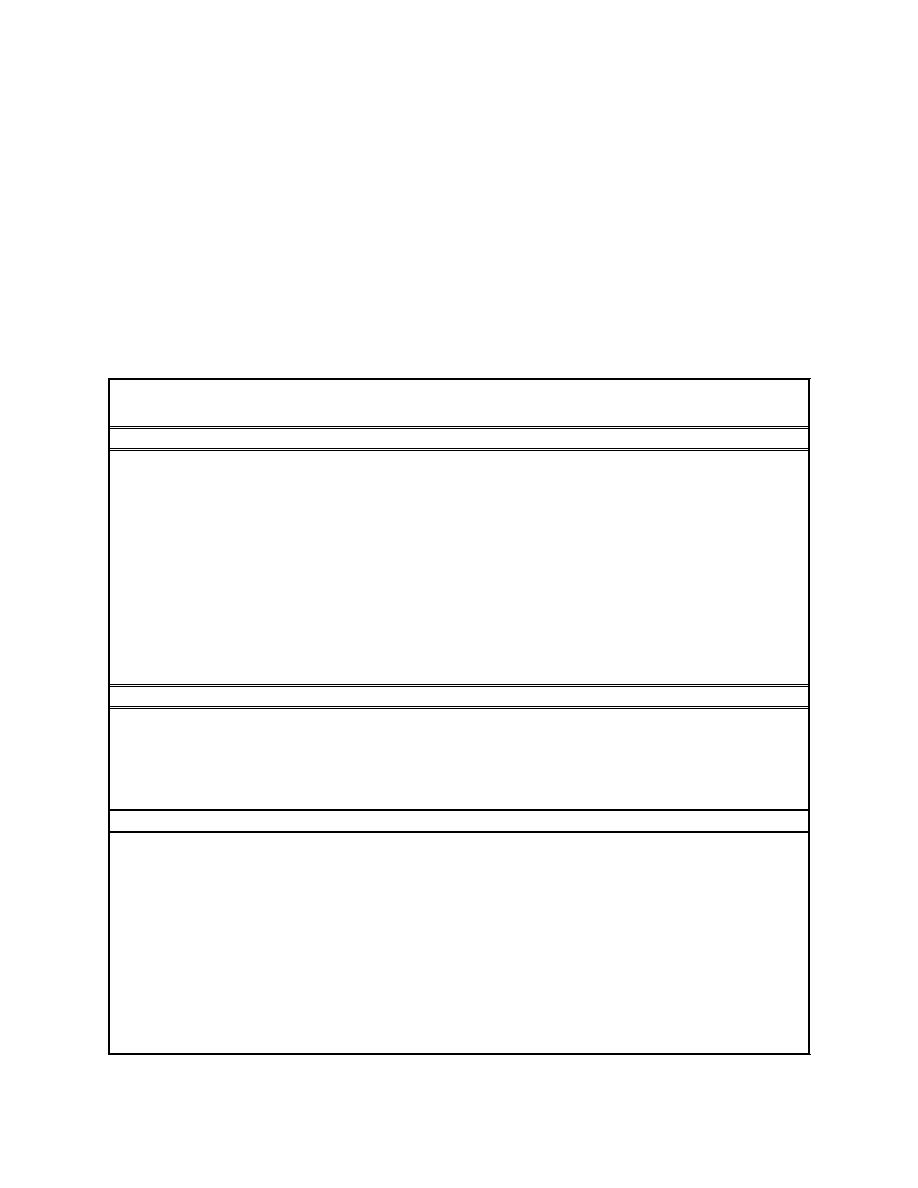 |
||
|
|
||
|
Page Title:
Table 4. Potential Beneficial Uses of Dredged Material |
||
| |||||||||||||||
|
|
 Technical Note DOER-C2
May 1999
can be used to make realistic predictions and evaluations. The pathogen (coliform) analysis is used
to detect the presence of disease-causing bacteria, usually of fecal origin. Table 3 lists methods
and appropriate characterization tests for determining biological properties.
BENEFICIAL USES OF DREDGED MATERIAL: There are many potential beneficial uses of
processed dredged material in upland, wetland, or aquatic environments (see Table 4). The
properties, as well as the types and bioavailability of contaminants, will determine the beneficial
uses of a dredged material and the amount of processing needed to reduce adverse environmental
impacts. In addition, waste materials such as fly ash, alkaline wastes, and spent lime can be added
to dredged material to engineer a soil product that can meet specifications required for a particular
beneficial use. Examples are impermeable caps for landfills, superfund sites, and brownfields.
Table 4
Potential Beneficial Uses of Dredged Material
Upland Environments
Fill, subgrade construction:
Highway/road/airport landing strip
Asphalt, concrete, bricks
Washouts/barren areas along highways
Mine shaft fill
Covers for landfills, brownfield, superfund and mining sites
Earthen slopes
Biomechanical erosion control structures
Cemeteries
Manufactured soil products:
Landscaping
Bagged soil
Recreational areas/parks/campgrounds
Silviculture, horticulture, agriculture
Covers for landfills, brownfield, superfund and mining sites
Wetland Environments
Constructed wetlands for water quality improvement
Creation of mitigation, wildlife habitat wetlands, marshes, etc.
Erosion control, bank stabilization
Geotextile tube fill, berm construction
Biofilters for landfill leachate/seepage
Biofilters for acid mine drainage
Aquatic Environments
Capping open-water placement sites
Beach and shoreline nourishment
Solid structures for fish habitat
Geotextile tube fill
Creation of:
Islands
Tidal flats
Sea grass meadows
Oyster beds
Fishing reefs
Clam flats
Dike or berm construction
10
|
|
Privacy Statement - Press Release - Copyright Information. - Contact Us - Support Integrated Publishing |